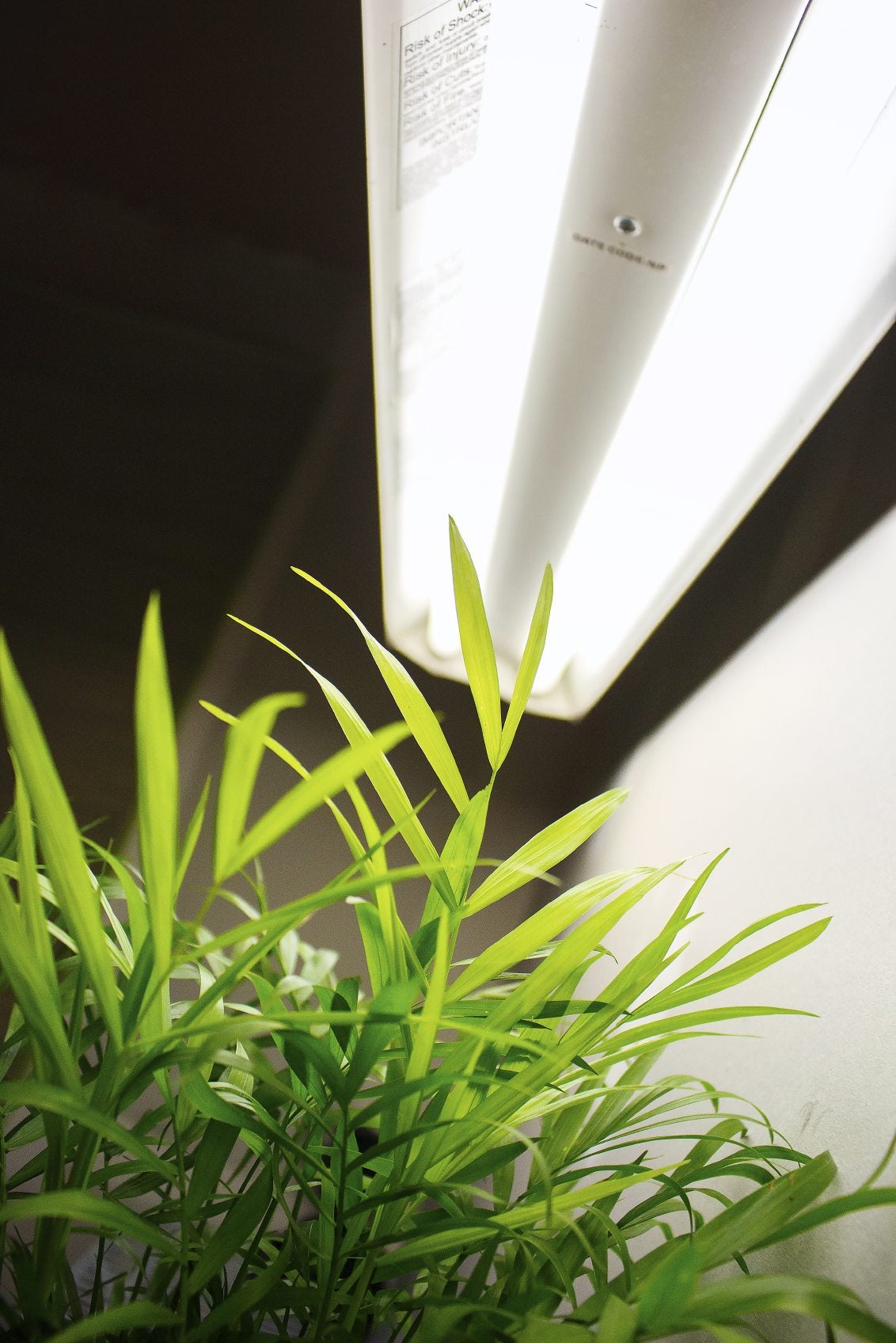What Are Grow Lights: Tips On Using Grow Lights On Plants


What are grow lights? The easy answer is that grow lights act as sunlight substitutes for growing plants indoors. There are many types of grow lights and using grow lights on plants can be very simple or extremely complicated. Read on for basic information to get you started.
Types of Grow Lights
Fluorescent Tubes – Since they are inexpensive, easy to use, and readily available in a variety of sizes and shapes, fluorescent grow lights are the first choice for many home gardeners. Fluorescent lights, which provide light primarily on the blue end of the spectrum, are cool to the touch, so they are safe to use above tender seedlings. Compact fluorescent lights are great for small-space gardening. You can also use newer, full-spectrum fluorescent grow lights which, because they provide light on the both ends of the spectrum, are very close to natural daylight. LED Grow Lights – This new technology offers many benefits to indoor growers and greenhouse owners because they are compact, low-heat, lightweight, and easy to mount. LED lights may appear dim to human eyes because the bulbs don’t provide a lot of yellow-green light, but they offer plenty of red and blue light that maximizes plant growth. Incandescent Lights – Old-fashioned incandescent lights are hot and can’t be placed too close to tender plants. However, some gardeners use incandescent lights, which provide light only on the red end of the spectrum, to supplement standard fluorescent tubes that provide mostly blue light. However, most indoor growers are opting for newer technology LED or fluorescent lights, which are easier to use and more energy efficient. Other types of indoor lights include metal halide lights or high pressure sodium lights.
Using Grow Lights on Plants
Selecting grow lights for plants requires careful consideration, as plants have very different lighting requirements. For example, plants such as dracaena or ferns require lower light while African violets and similar plants thrive in low to moderate light. In general, succulents, most herbs, and many types of orchids need more intense light. Seedlings require a lot of bright light to prevent them from becoming leggy. Keep in mind that nearly all plants need at least six hours of darkness. An inexpensive timer will simplify the process.
Gardening tips, videos, info and more delivered right to your inbox!
Sign up for the Gardening Know How newsletter today and receive a free copy of our e-book "How to Grow Delicious Tomatoes".

A Credentialed Garden Writer, Mary H. Dyer was with Gardening Know How in the very beginning, publishing articles as early as 2007.
-
 Try The Trend – Turn Any Bed Into A Keyhole Garden With This Clever In-Ground Composter
Try The Trend – Turn Any Bed Into A Keyhole Garden With This Clever In-Ground ComposterKeyhole gardening is an efficient and sustainable practice that saves space. Get started on this DIY project quickly and easily with an in-ground composter.
By Bonnie L. Grant
-
 4 Superfast Composting Methods: Turn Waste Into Garden Gold In 30 Days Or Less
4 Superfast Composting Methods: Turn Waste Into Garden Gold In 30 Days Or LessTry the fastest composting methods to turbocharge your pile and transform kitchen scraps and garden waste into finished compost in just a few weeks.
By Mary Ellen Ellis
-
 8 Easy Care Houseplants That Live A Long Time
8 Easy Care Houseplants That Live A Long TimeClick here to learn about our 8 favorite low maintenance houseplants that can, with proper care, live a long time.
By Amy Grant
-
 How Often Should You Repot Plants?
How Often Should You Repot Plants?Escaping roots and shrinking leaves may mean your plant wants a new pot, but some like staying cramped and cozy.
By Mary Ellen Ellis
-
 Orange Flowering Houseplant Varieties With Tropical Flair
Orange Flowering Houseplant Varieties With Tropical FlairClick here to learn about some cheerful orange-blooming houseplants you can try growing.
By Mary Ellen Ellis
-
 Variegated Houseplants With Lovely Leaves
Variegated Houseplants With Lovely LeavesWhat are some of the best variegated houseplants to add to your collection? Click here to find out.
By Amy Grant
-
 Lovely, Lacy Indoor Foliage Plants
Lovely, Lacy Indoor Foliage PlantsClick here to learn about some houseplants with lacy foliage to add to your collection.
By Mary Ellen Ellis
-
 Best Christmas Houseplants And Plants For Winter Holidays
Best Christmas Houseplants And Plants For Winter HolidaysClick here for an idea of the best houseplants to use for holiday décor for Christmas, Hanukkah, Kwanzaa, and New Year’s.
By Laura Miller
-
 Best Big Houseplants To Create An Indoor Oasis
Best Big Houseplants To Create An Indoor OasisIf you have the space you may want to grow some large houseplants. Here are some ideas.
By Mary Ellen Ellis
-
 Relaxing Plants To Grow Indoors For A Calmer Mind
Relaxing Plants To Grow Indoors For A Calmer MindAre there houseplants that can help you to relax? Click here to find out.
By Laura Miller